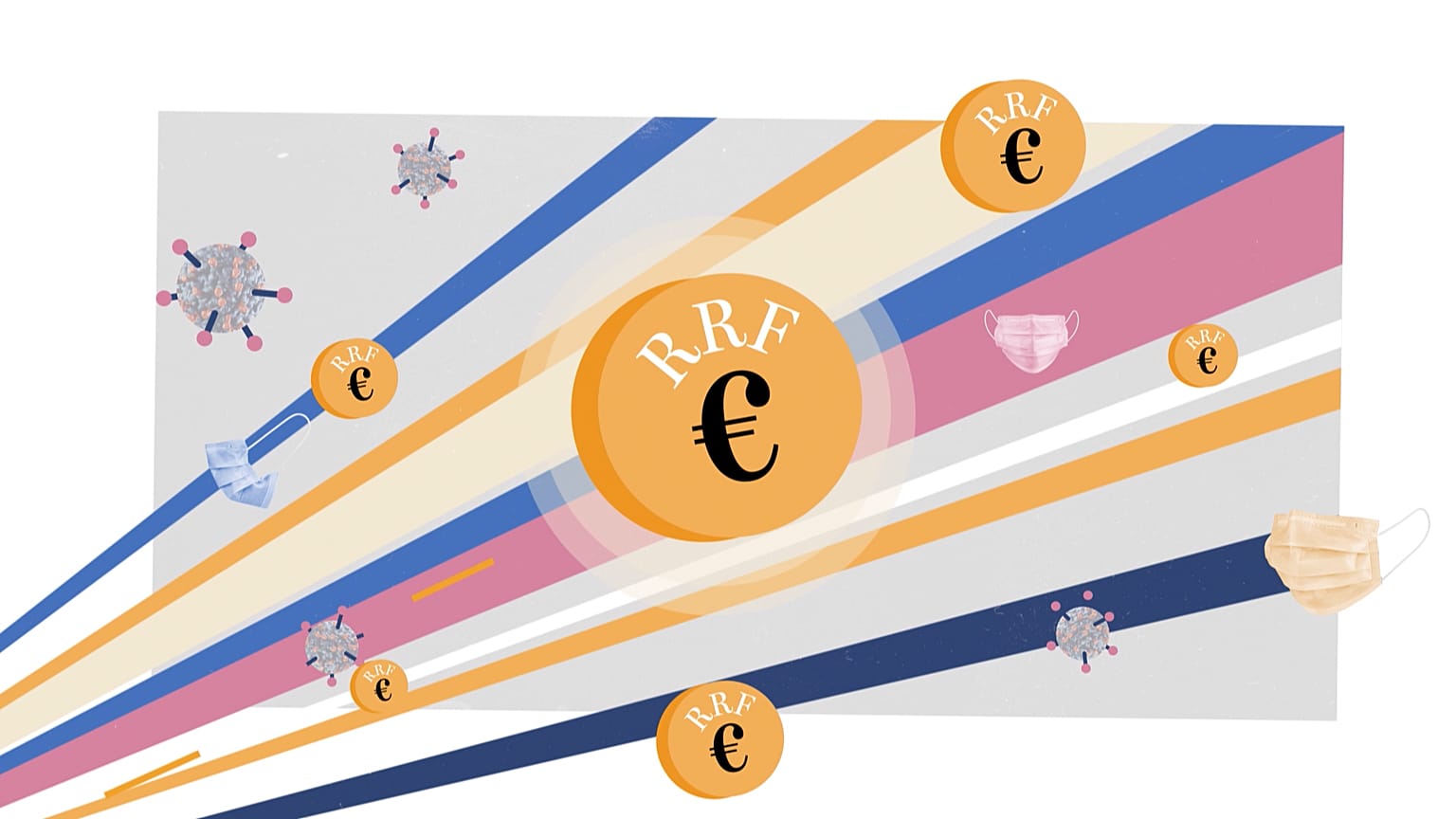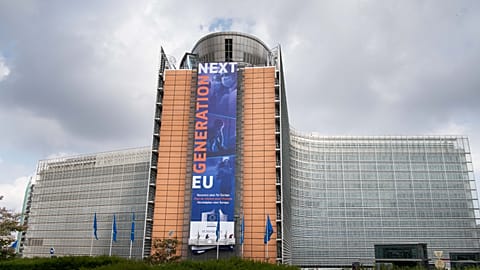Three years ago the European Union introduced the RRF in February 2021. Why was it necessary, what has it achieved and will it continue to deliver? Find out in this week's Real Economy Crash Course.
The Recovery and Resilience Facility (RRF) is a €723 billion financial instrument set up by the European Union to help Member States recover from the economic and social consequences of the COVID-19 pandemic.
Approved by the European Council and the European Parliament in 2021, the RRF is part of the NextGenerationEU package - the EU's recovery plan. The RRF operates on a 'non-reimbursable' basis, meaning EU funding is provided to Member States in the form of grants or loans.
The grants are intended to finance projects related to the green and digital transitions as well as other measures designed to strengthen Member States' economies and societies.
The loans can be used to finance reforms and investments supporting resilience and recovery. However, the RRF is a temporary instrument that will expire at the end of 2026.
It is complemented by other EU recovery measures, such as the European Regional Development Fund and the European Social Fund.
The COVID-19 recession
The economic fallout of the COVID-19 pandemic was uneven across EU Member States. Industries across the European continent were heavily affected by the pandemic. The businesses more affected were those where personal contact was a key element of activity. As a consequence, there were sharp falls in the tourism, retail and cultural industries.
The sharpest decline in EU output was observed in the second quarter of 2020. SMEs (small and medium-sized enterprises) were particularly affected by the restrictions put in place to contain the spread of the virus.
The most widely-faced disruptions were caused by increases in late payments, followed by supply chain disruptions, leading to shortages of materials, goods and services. Other disruptions included increased prices and difficulties in sourcing alternative suppliers and exporting.
In addition, the COVID-19 pandemic had profound implications for workers and the broader labour market. Frontline workers were more subject to income loss and job insecurity while facing health and safety risks.
The rise in unemployment was largely mitigated due to the use of job protection schemes. Still, these initiatives did not prevent higher negative impacts on vulnerable socio-economic groups including workers with low levels of education, young people and migrants.
Young workers experienced the largest decrease in employment. Additionally, those between the ages of 25 and 54, as well as older male workers, were most impacted by cuts in working hours.
Temporary workers were particularly affected by the pandemic, with the number of temporary contracts across the EU falling by 27 per cent between spring 2019 and spring 2020, representing more than three-quarters of the reduction in employment.
An unparalleled rescue fund
The RRF is the largest recovery instrument in the EU's history and was devised as a fund to help Member States respond to the pandemic and emerge stronger.
The RRF disbursed €56.5 billion as pre-financing in 2021 and 2022, and an additional €10.4 billion of pre-financing in 2023 and early 2024, upon the approval of the REPowerEU chapters.
This helped Member States reduce their initial financial needs and helped businesses and citizens get back on their feet. It also created space for Member States to focus on addressing the long-term challenges of the pandemic, implement immediate investments and transition to a more sustainable and resilient future.
A performance-based funding programme
The EU disburses recovery funds against performance indicators. Reforms and investments put forward in national recovery and resilience plans must align with RRF regulations and national challenges.
So far €225 billion has been disbursed to Member States or a third of the total budget, with many countries surpassing the 37 per cent they must spend on climate-related projects.
It is estimated that half of the increase in public investment in the EU between 2019 and 2025 is attributable to investments financed by the RRF.
However, critics argue that performance-based funding is not results-based and without result indicators, there is no requirement for countries to continue reporting on the actual outcomes of projects.
Additionally, Russia's full-scale invasion of Ukraine, high inflation rates and the energy crisis have created unprecedented challenges for Member States trying to deliver on performance indicators set by country-specific recommendations (CSRs).
Nevertheless, the European Commission suggests that the RRF has the potential to increase EU real GDP by up to 1.4 per cent in 2026 compared to a scenario without the RRF. It is also projected to lead to a short-term increase in EU employment by up to 0.8 per cent.
Positive results and future plans
SMEs play a vital role in Spain's economy. The government has introduced financial tools to improve SMEs' access to credit and has called for extra loans to improve SMEs' access to capital markets and inspire private investment, particularly for SMEs operating in the green and digital sectors.
Across the border, Portugal is using disbursed funds to support investments in net-zero technology to help the Portuguese industries compete better amid the energy transition. Individual businesses or initiatives can access a budget of €50 million to invest in technologies that adhere to the Net-Zero Industry Act, including solar PV, onshore and offshore wind, batteries, and storage.
In the North Sea, Belgium announced the building of the Princess Elizabeth 'energy island' would start in March 2024, allowing for at least 3.15 GW of future offshore wind energy to be linked to the onshore electricity grid.
Elsewhere more than 28 million megawatt hours in annual energy consumption have been saved across the European continent.
Significant progress has been made in expanding internet access and climate resilience, with over 5.6 million households now connected to high-speed WiFi networks and almost 9 million people benefiting from protection measures against climate-related disasters.
The European Council also recommended the 27 Member States revise their country-specific plans by the end of 2023 to maximise their impact following changes in fuel costs, the invasion of Ukraine and supply chain issues.
In Greece, Slovenia and Croatia, plans were also updated to help tackle natural disasters, which made it difficult for governments to implement certain RRF reforms and investments.
With the modernisation of public infrastructure also a top priority, the goal is to accelerate disbursement before the 2026 deadline.
To read more about the RRF's impact on the Greek economy, click here to watch the latest episode of Real Economy.

















